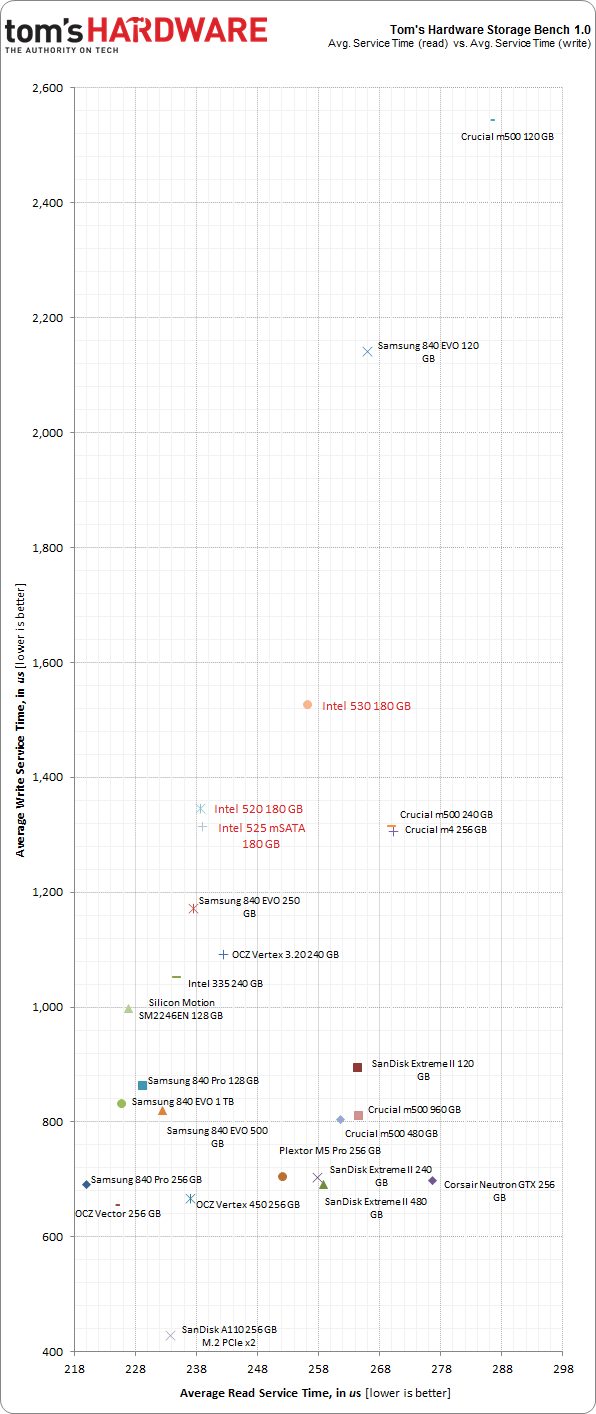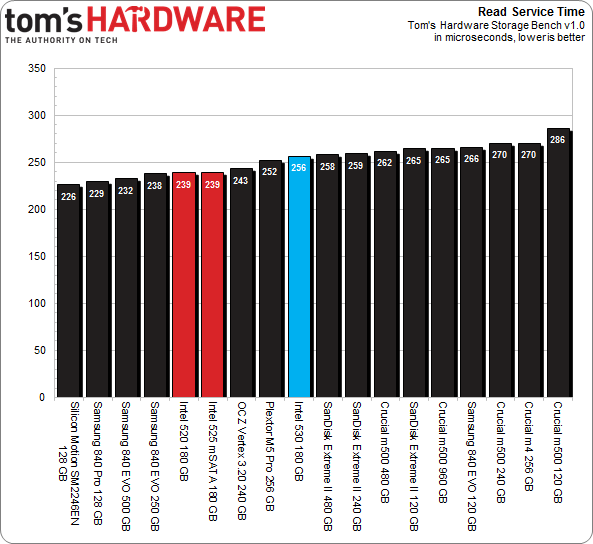Intel SSD 530 Review: A Revised Controller And 20 nm Flash
Intel recently lifted the veil on a replacement for its SSD 520, not surprisingly called the SSD 530. It partners new SandForce silicon with IMFT's 20 nm flash for better power consumption and a more modest price tag. Does the evolution pay off?
Results: Tom's Hardware Storage Bench, Continued
Service Times
Beyond the average data rate reported on the previous page, there's even more information we can collect from Tom's Hardware's Storage Bench. For instance, mean (average) service times show what responsiveness is like on an average I/O during the trace.
It would be difficult to graph the 10+ million I/Os that make up our test, so looking at the average time to service an I/O makes more sense. For a more nuanced idea of what's transpiring during the trace, we plot mean service times for reads against writes. That way, drives with better latency show up closer to the origin; lower numbers are better.
Write latency is simply the total time it takes an input or output operation to be issued by the host operating system, travel to the storage subsystem, commit to the storage device, and have the drive acknowledge the operation. Read latency is similar. The operating system asks the storage device for data stored in a certain location, the SSD reads that information, and then it's sent to the host. Modern computers are fast and SSDs are zippy, but there's still a significant amount of latency involved in a storage transaction.
See the SSD 520 and 525, nestled closed to one another? Notice the SSD 530, off on its own? What gives? Are the average data rate and mean service time plots related somehow?
They're not, really. And that's largely because of the way in which average data rate accrues, based on busy time. As a result, this figure is most heavily weighted towards activity at low queue depths, and not necessarily the most taxing accesses. If a given system isn't being otherwise utilized, does it really matter how fast your SSD is? Not as much, no. But if you mix in more demanding tasks, it's a lot easier to distinguish between faster and slower drives.
The SSD 530 incurs a roughly 7% penalty compared to the SSD 520 and 525. Is this attributable to the newer drive's 20 nm flash? It's hard to say for certain. Look at the SSD 335 and Vertex 3.20. Both rock 240 GB of NAND that's very similar, and neither is as fast as the Silicon Motion 128 GB reference platform. They do, however, best Crucial's M500 and venerable m4, though.
Get Tom's Hardware's best news and in-depth reviews, straight to your inbox.
The SSD 520 and 525 again match each other, with the SSD 530 a bit behind them. Given where the modern 120 GB 840 EVO and M500 finish, Intel's SSD 530 is still a serious contender at 180 GB, though.
Current page: Results: Tom's Hardware Storage Bench, Continued
Prev Page Results: Tom's Hardware Storage Bench Next Page Results: PCMark Vantage And PCMark 7

